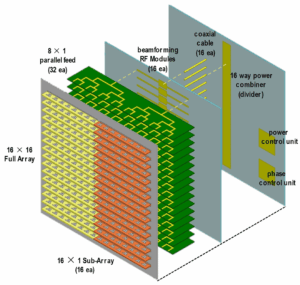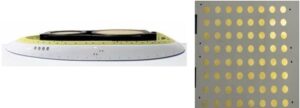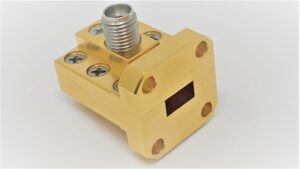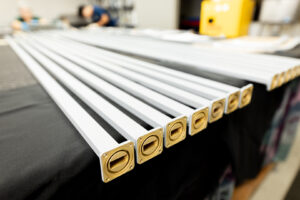Table of Contents
Definition
Directivity is a parameter describing how well a coupler is capable of distinguishing how much power is transferred in the forward direction and how much is reflected backwards. As such, it is an essential characteristic of directional couplers used in design and analysis for radio frequency and microwave systems. The metric is usually expressed in dB, with higher values representing increasingly better directivity.
In other words, a high directivity value implies better isolation between the signal continuing down the main line and the signal reflecting back to the source. This level of isolation is critical when it comes to applications such as network analysis and signal processing, where high levels of accuracy in performing these measurements may mean the difference between a functioning RF system and a malfunctioning one.
For wireless routers, among many other possible residential applications, a 30 dB coupler could easily get the job done. It might not be the most effective solution, but as long as the RF signal does not have to cover great distances with complex handling, 30 dB of reverse signal and clamping is sufficient. More critical installations, such as a telecommunications satellite system, will require a 40 dB or even higher when distances of up to thousands of miles are involved and all signals are obviously quite critical for the targeted process or system.
It is important to note that the performance of a particular coupler is not accurately described by directivity characteristics viewed in isolation. Ideally, for a variety of system applications, a broadband coupler would maintain the specified 30 dB directivity rating not just in the 700-800 MHz range of channels it was designed for, but also at the 3.4-4.2 GHz frequencies used in some other cable television channels. A similar system application would be the cable television with channels transmitted at frequencies in the tens of megahertz, and even stretches of single gigahertz frequencies.
In fact, though, such devices are difficult to design, so higher quality directivity should not apply only for the defined range, and it is unlikely to be higher for each subsequent frequency set. Overall, higher directivity always requires more effective electromagnetic performance and engineering precision always translates into higher costs. The option of spending more should always be considered, but it should also be clear that the cost of low-quality and underperforming components can quickly surpass the price of high-quality items in the risk to other potentially critical RF components, if not immediate damage.
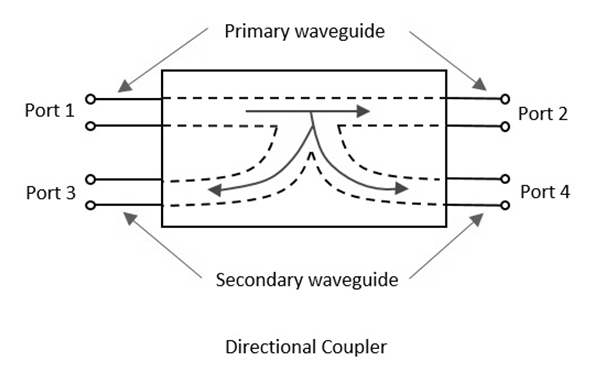
Mathematical Expression
The mathematical expression of directivity in a directional coupler involves calculating the ratio of the power output at the isolated port to the power output at the coupled port when a signal is present at the input port. The formula used to determine this parameter is given by:
Directivity (dB)=10log10(PisolatedPcoupled)\text{Directivity (dB)} = 10 \log_{10} \left( \frac{P_{\text{isolated}}}{P_{\text{coupled}}} \right)Directivity (dB)=10log10(PcoupledPisolated)
The idea of directivity is crucial to an understanding and designing of couplers and can directly influence their efficiency in a variety of settings. For instance, in the case of a domestic Wi-Fi system, the directivity of 25 dB is sufficient. This means that power at the isolated port is about 316 times lower than at the coupled one. It is explainable by the specific signal and operational environment observed by most people in their homes. However, in some more complicated systems, such as mobile phones or satellite communication systems, this value should be 40 dB and higher. In this way, the power at the isolated port is about 10,000 times lower, which reduces signal interference, making their operation more effective and reliable.
Therefore, this characteristic is highly important since making the right choice can ensure saving financial and time resources while also addressing the needs of existing or future systems. In addition, understanding this element can help to assess product quality since higher directivity is linked to more stringent requirements for technologies and materials. Thus, although these couplers might be more expensive, they will also be more durable and reliable, contributing to system performance.
Importance in Signal Integrity
The use of a directional coupler and especially its directivity is of paramount importance in high signal integrity applications, including broadcasting equipment and telecommunication facilities. The directivity doubles as a measure of power in two signals, which are separated by radiation aspects. In normal use and application in the transmission of signals, assume a T.V broadcast station is designed to send a signal to one or more antennas, in which a coupler with a 30 dB directivity has been used.
When used, the signal is split into two transmitters, where is well approximately 99.9% power at the first transmitter as the.1 % (backward reflected signal) is at the second transmitter thus enabling as the initial signals. The transmission in the second transmitter is of lower quality and therefore the viewer at home instead of seeing a clear image will appear as ghosting in the real sense. On the other hand, when a frequency coupler of 20dB is used, the signal will split with the power of 1 present at the second transmitter and ghosting effects will be experienced.
The same coupler choice also affects and the integrated efficiency in network systems, including mobile telephony. Transmitters communicate with their respective antennas by use of couplers installed in Mobile Base Station. High directivity resulting from higher signal power as transmitted to the receiver causes little power reflection towards the transmitter. The later might become less efficient causing the temperatures to rise more thus the lifespan of transistors and amplifier diodes is reduced.
However, less power reflected to the transmitter ensures that the service provided to the subscribers is better with fewer dropped voices and missed data. Least reflection will hardly be experienced; the photoconductive jammers will be no prevention to those transmissive gadgets in un-technician hands gaining ham property as a source of halt. Similarly in the application and use of the scientific instruments such as the laboratory equipment in particle accelerator have optimal measurement signal, a signal is lost in highly reflected systems such as in a 40dB isolation.
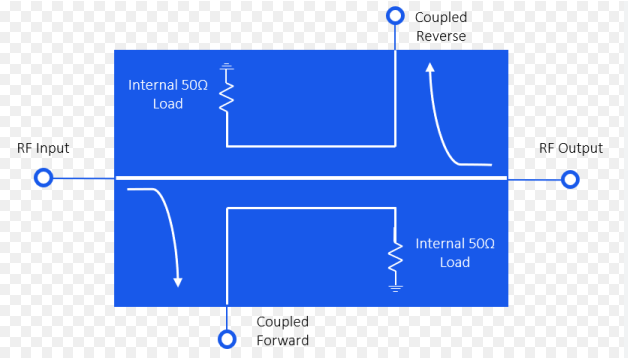
Typical Values
First of all, it should be mentioned that the directivity of the directional couplers may significantly differ depending on the required performance level and specific coupler topology, and therefore one precise value cannot be determined. In many devices and applications of commercial couplers, the directivity ranges from approximately 20 dB to 40 dB. At the same time, it can be higher in the use of more tight coupling or better loads to obtain an appropriate level of isolation.
The couplers used at home, for example, in a satellite dish set-up, may have a directivity of approximately 20 dB to 30 dB. The required signal separation precision in home entertainment application is not extremely high, and 25 dB directivity means that the power of the reflected signal is approximately 0.32% of the forward signal power, which does not create serious issues affecting the quality of the signals but it is also sufficiently cheap.
At the same time, in broadband data or cellular telephone service applications, higher directivity devices are typically used that have a 30 – 40 dB directivity. Such high directivity couplers are required because the ability of the reflected “backwards” wave to interfere with the forward one significantly increases in these applications where a high quality of service must be maintained and many data packets are transmitted.
A 35 dB directivity coupler reflects approximately 0.032% of the forward signal power of the reflected signal, making it nearly impossible for the reverse signal to interfere with the signal propagation and significantly improving the overall network quality of service due to more effective signal processing. However, for many consumer grade applications, the price of manufacture of a 40 dB coupler may be much higher, not suitable for mass production of cheap electronic devices, and an engineer must precisely determine the appropriate directivity level and initiate the design of a coupler with this characteristic.
Impact on System Design
Directivity of a directional coupler is an important aspect of the design of electronic and communication systems, as it affects their performance, efficiency, and reliability to a great extent. As such, system designers strive to choose couplers fluctuating around an optimal value of directivity, which would be appropriate for the specific demands of the application, taking into account the costs and physical constraints. For instance, in the case of telecommunications and network deployment, the use of high directivity couplers is a beneficial approach considering the high number of antennas and transmitters.
The selection of couplers with 40 dB directivity or higher enables almost no interference to flow between the channels as only less than 0.01 per cent of the power of the reflected signals is allowed to influence the forward transmission. Consequently, even in the complicated and highly populated areas of urban environments, strong directivity serves to separate one broadcast from another, which in its turn, allows providing optimal utilization of the frequency spectrum.
In other cases, the risk of interference is higher, which necessitates greater directivity. Moreover, such an approach renders possible achieving the best communication channels between providers. In addition, reliance on less directivity couplers would mean necessity of further processing transmitted signals, which is both costly and complex due to the need for additional equipment.
The approach to radio broadcasting is also dependent on directivity to ensure signals manage to reach their receivers even with numerous other equipment in the station. The use of couplers with at least 30 dB directivity is common, as the power of the reflected waves is enough to be absorbed within the building of the station. Such an approach prevents the interference of the transmitted signal with the equipment’s reflecting loss, which is crucial for the experience of the listeners. Reduced loss ensures that the equipment performs adequately, and the signal of the broadcast remains clear, which is directly related to the experience of the general public consuming media, as well as broadcast station rating.
In the same way, in the field of aviation and maritime radar systems, the directivity of a coupler has a substantial impact on the performance of the radar, as the radar requires a directivity of at least 35 dB to differentiate reflections of the transmitted pulse from that of objects near the aircraft or ship. Such an approach ensures that the system reads only the information of the objects it intends to measure, and the exchange of information with human controllers is conducted based on the facts. Similarly, physical dimensions and specifications of couplers should be appropriate for the existing infrastructure to fit in and operate without modification.
At the same time, the BW of the operating frequency area is dependent on directivity, such that low directivity leads to a narrower operating frequency area of the coupler. This is due to the increased reflection caused by weak directivity, which is a limiting factor determining the maximum operating frequency of the coupler. The design of the coupler is also dependent on carrier power, where 50 watts is considered an upper limit for the waveguide-type coupler. Finally, directivity affects dimensions and weight of the coupler, which is a relevant factor for objects of high importance where the space is limited, such as aircraft or satellites.
Variability with Frequency
Directivity in directional couplers largely depends on frequency and, what is more, has a pronounced variability across different ones. As a result, it directly affects the use of these components in systems requiring their use over their entire range of operation. Such variability is pivotal in the industries such as telecommunication and broadcasting. For example, in practice, a directional coupler can exhibit a directivity of 30 dB at, say, a frequency of 1 GHz. Such a level of directivity means that forward-going and reverse signals will be separate effectively, and the former will have a little chance of causing interference for the latter, even despite their close proximity and exposure to high power.
However, as soon as an increase in frequency to, say, 10 GHz, directivity may fall, and by how much or little depends purely on the specific circumstances related to the physical and electrical limitations observed in the operation of this component. Typically, it would decrease to 25 dB or lower at this point. Consequently, a much greater proportion of forward signals will be lost for the reverse ones, and the overall system performance will deteriorate accordingly. More specifically, greater interference will cause by the forward signals to the reverse ones will result, and this, in turn, may diminish the quality of data transmission.
At the same time, a telecommunication network can operate across a range of different frequencies. For example, it is the case for a cellular network, which frequencies vary from 700 MHz to around 2.5 GHz. The coupler used in its operation would have to provide a high level of directivity across all these frequencies to ensure that all the frequency spectrum at hand is used in the most efficient way and without any likelihood of the cross-channel interference.
This is a crucial requirement for the capacity and, what is more, the reliability of the network. Of course, such factors as an increase in the amount of power available in the system and the number of the signals passed can result in an asymptotic accumulation of interference, no matter how high such a level can be. No surprise, therefore, that telecommunication companies spend considerable sums of money to develop the couplers with a relatively consistent directivity across as broad frequency ranges as possible due to the direct impact on the cost-efficiency of the systems and the reduced need for their maintenance and troubleshooting.
In the case of satellite communications, where signals have to cover vast distances and, as a result, are exposed to many different opportunities for interference, achieving an equally high directivity across the operational frequencies of interest can be even more important and decide satellite operation success, for better or worse. This is especially relevant for applications such as television broadcasting or GPS navigation.

